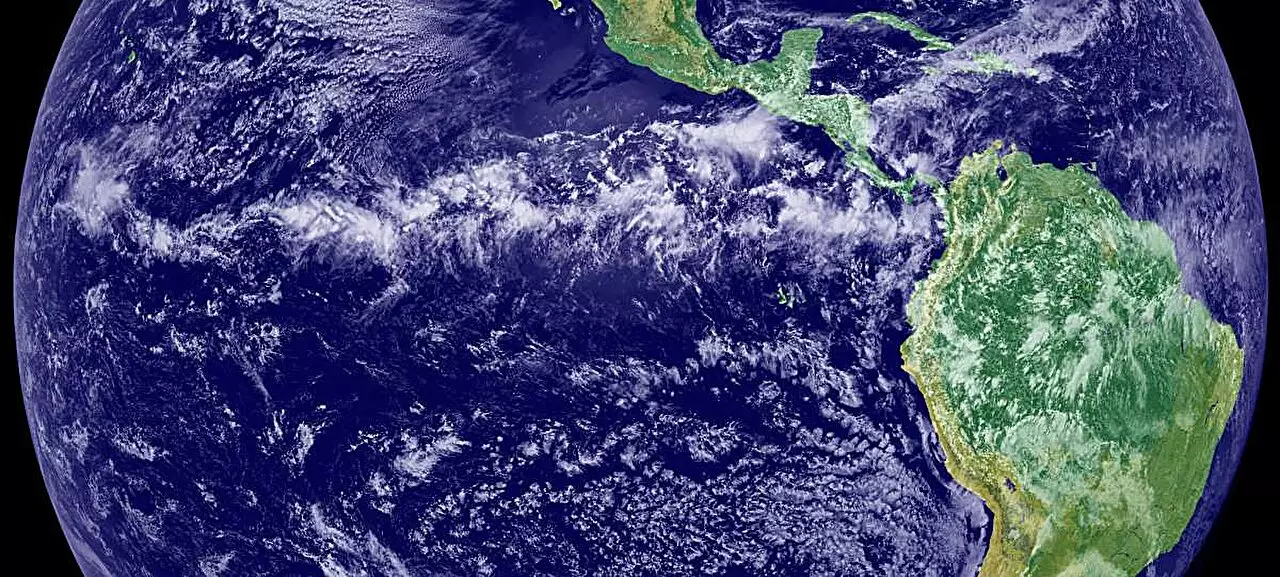The summer of 2024 marked a pivotal moment in our understanding of climate change, categorizing it as the hottest summer on record. This record-breaking heat wave was not an isolated incident but rather a continuation of a concerning trend wherein summers are growing increasingly hotter and drier around the globe. The repercussions of this phenomenon are grave, leading to severe droughts, rampant wildfires, crop failures, and public health risks, notably in densely populated regions of North America and Europe. While the overarching narrative of a warming planet is well-known, recent research endeavors illuminate a specific aspect of this crisis: the weakening of Earth’s air circulation systems.
Air circulation systems are essential for maintaining the global climate balance by distributing heat and moisture. However, these systems are becoming less effective due to human activities that have drastically altered atmospheric dynamics. Dr. Rei Chemke and his team from the Weizmann Institute of Science conducted groundbreaking research that identifies the human fingerprints behind this weakening airflow. Central to their analysis are two critical components: storm tracks and the Hadley circulation.
Storm tracks serve as high and low-pressure systems that dictate weather patterns across the planet, guiding atmospheric currents that are crucial for climate regulation. Meanwhile, the Hadley circulation, characterized by hot air rising at the equator and subsequently cooling down as it moves toward higher latitudes, creates a vital feedback loop in global weather and temperature patterns.
The unsettling factor is that both these systems have shown signs of deterioration since the late 20th century; however, the root causes of these changes were not entirely clear—until now. The research spearheaded by Chemke and his collaborators has unearthed a vital link: the emissions generated by human activity are a primary contributor to the weakening of these crucial air circulation systems.
In their recent studies, Chemke’s team correlated historical data with advanced climate models to better understand the relationship between human-generated greenhouse gases and weakening air circulation. It was revealed that emissions like CO2 and aerosols are preferentially warming high latitudes more than lower ones. This uneven warming reduces the temperature differential that drives storm tracks, consequently leading to a decrease in storm intensity. “The result is a smaller temperature gap, which has a cascading effect on our weather systems,” Chemke explains, emphasizing that this disruption leads to more extreme heat events as less cool air is entrained from the oceans to the land.
The interactions highlighted in Chemke’s research indicate that the storms traditionally known for their cooling effects are undergoing significant changes, resulting in heat accumulation on land and a corresponding escalation of heat-induced phenomena. This represents a stark departure from historical norms, where the impact of such natural processes was typically stabilizing.
The complexity of climate influences extends beyond human activity, yet Chemke’s findings emphasize that past climate models may have overlooked the contributions of natural factors. By utilizing simulations of historical climate data, the study contrasted the influences of natural and anthropogenic factors on the Hadley circulation over the past millennium. Historically, natural phenomena like volcanic eruptions played a crucial role in strengthening this circulation. Yet, the current scenario tells a different story—a narrative dominated by human-induced emissions that are weakening these same systems.
The research indicates that while volcanic activity historically contributed to atmospheric cooling, the present human impact is of a different magnitude and direction. “We have transitioned from a cooling effect from natural sources to a pronounced warming influence due to human actions,” states Or Hess, a co-researcher in the study.
Given the revelations from Chemke’s studies, it becomes increasingly evident that climate scientists must expand their frameworks to adequately account for both human and natural factors influencing climate change. Conventional methods have heightened focus on human-related emissions, often neglecting countervailing natural influences that can also shape climate trajectories. A balanced view acknowledging both influences is critical for crafting effective climate policies and strategies for mitigation and adaptation.
The implications of this research are profound. It highlights not just our role in climatic shifts but also serves as a clarion call to revisit the methodologies we use to predict and model future climate scenarios. As we navigate through daunting climate challenges, a more intricate understanding of atmospheric interactions is not just beneficial but essential for sustainable progress.
In summation, the summer of 2024, marked by record temperatures, serves as both an alarm and a lesson, reminding us that our activities have far-reaching impacts on climate systems that sustain life on Earth. Harnessing this newfound understanding gives humanity an opportunity to rethink its approach and mitigate the escalating crisis on our planet.

